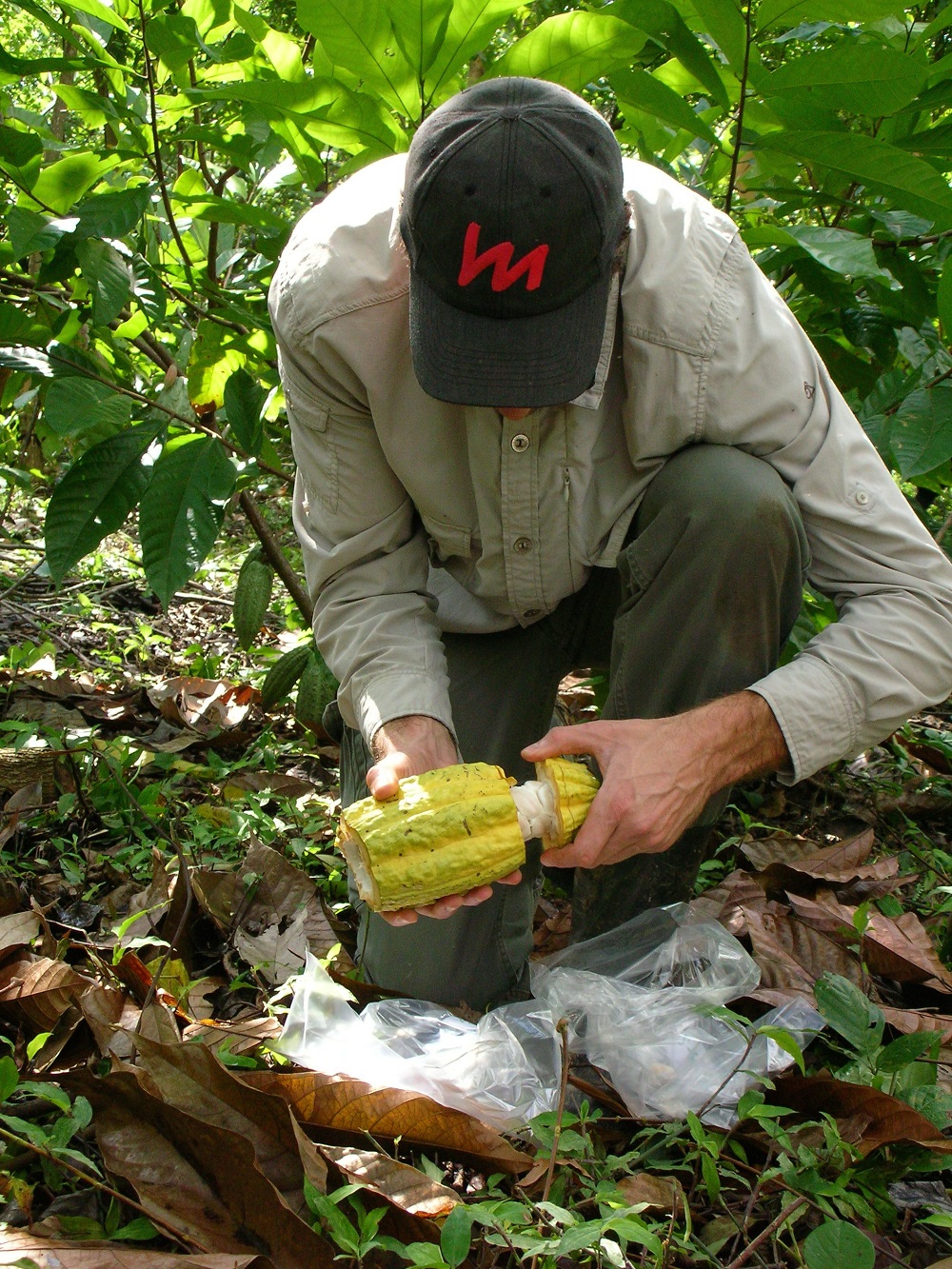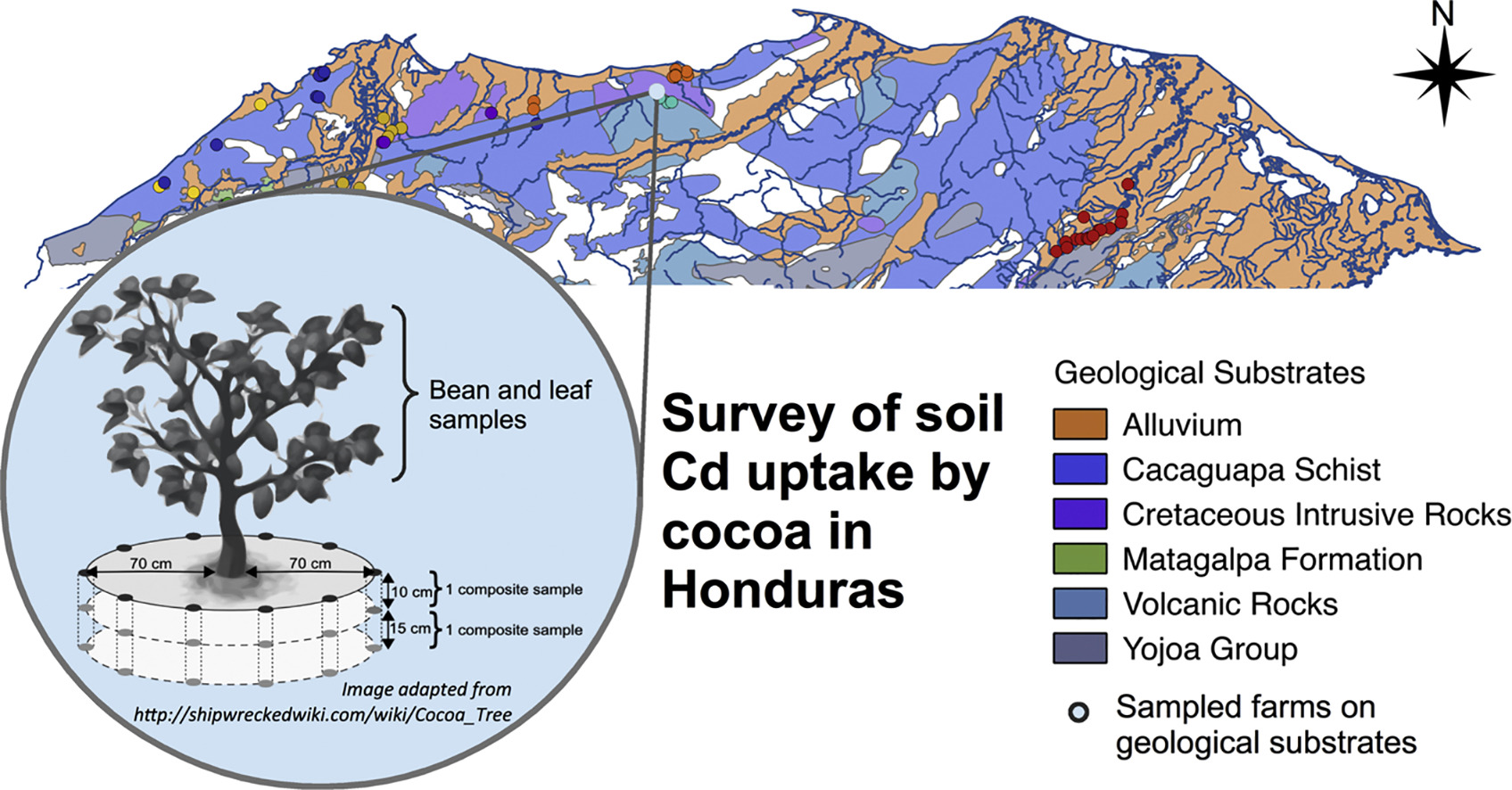Measuring cadmium levels in cocoa: New study from CdOCOA project
With a focus on the identifying the role of soil in elevated cadmium accumulation by cocoa plants in Honduras, a new study published in Science of the Total Environment from the WFSC member group of Prof. Rainer Schulin surveyed 55 cocoa farms.

Cadmium is a trace metal with no essential biological function that is toxic to plants, animals, and humans at low concentrations. Contamination of cocoa with cadmium is becoming an important issue for smallholder farmers and for the chocolate industry, and the European Union (EU) defined maximum values for cadmium in cocoa products imported to the EU to be enforced in 2019 (0.1 mg kg− 1 for products with < 30% cocoa solids and 0.8 mg kg− 1 for products with > 50% cocoa solids). The WFSC Research Program project “ Cadmium availability in soils and its uptake by cocoa in Latin America” (CdOCOA) aims to identify the role of soil and soil management factors in elevated cadmium accumulation by cocoa plants in Honduras, the country where the highest cadmium concentrations in cocoa beans have been reported, and in Bolivia.
Honduras is one of the countries where elevated cadmium contents in cocoa beans were observed recently by the chocolate industry. Even though most cocoa farmers do not add organic or mineral fertilizers to their plantations and many farms are certified for organic production in Honduras, applications of fertilizers and pesticides in the past are still a possible source of soil contamination cadmium.
In the new study published in Science of the Total Environment, lead author and postdoctoral researcher Dr. Anja Gramlich sought to identify sources of cadmium in the soils of cocoa plantations in Honduras and the factors governing its accumulation in cocoa. The research team, therefore, carried out a survey on 55 cocoa farms in Honduras, determined cadmium concentrations in cocoa leaves, pod husks, and beans, and analyzed their relationships to a variety of surrounding soil and site factors. They found was that cadmium concentrations were higher in the leaves than in the beans. With an average of 1.1 ± 0.2 mg kg− 1, the bean cadmium concentrations exceeded the proposed EU limit.
When looking at soil characteristics, the researchers found no influence of fertilizer application or vicinity to industrial sites on soil cadmium concentrations; the difference in soil cadmium between sites is, therefore, due to natural variation. Also, cocoa trees have the ability to extract higher amounts of cadmium than other plants, and the measured ‘total’ soil Cd concentrations were within the range of what is normal for uncontaminated soils worldwide. The recycling of cadmium with leaf litter and pod husks falling onto the soil below the trees may promote to the enhanced cadmium availability in the surveyed soils.
By identifying the factors that govern cadmium accumulation in cocoa beans, research can now focus on finding measures to reduce the concentrations. Measures such as adding lime to the soil or selectively planting trees in soil with low available cadmium are being evaluated.
As research continues, Prof. Rainer Schulin explained to ETH News: This heavy metal is found in cereals and vegetables as well. Smokers also absorb substantial amounts of cadmium from tobacco – up to half the threshold recommended by the World Health Organization (WHO). “Compared to our everyday uptake of cadmium with daily food, a treat with a piece of dark chocolate is no problem.”
Read the full article "Soil cadmium uptake by cocoa in Honduras" from the team of authors at ETH Zurich and Fundación Hondureña de Investigación Agrícola, Honduras, in Science of the Total Environment external pageherecall_made
The paper is an output of the WFSC Research Program project “Cadmium availability in soils and its uptake by cocoa in Latin America" (CdOCOA). For more information on the project, visit the project page.

